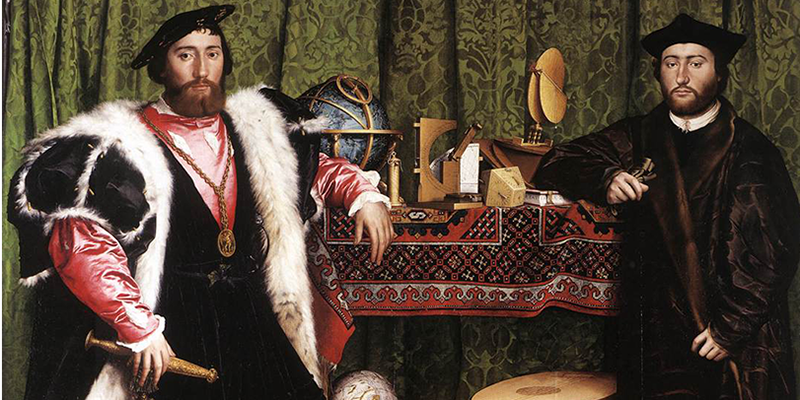click image to enlarge
Hans Holbein The Younger
The French Ambassadors
1544. Oil and Tempera on wood
National Gallery of London
After numerous plagues, the crusades, and living in a society with a high infant mortality rate, various themes arose inviting death and mortality into literature and the visual and musical arts. The skull was, and is, a constant reminder of mortality and a durable symbol of the transition to the next plane of existence. Moreover, the iconographic and symbolic inclusion of a skull in art during the Renaissance has an eschatological connotation, in that it represents the bridge between this life and the Christian belief of what comes after.









